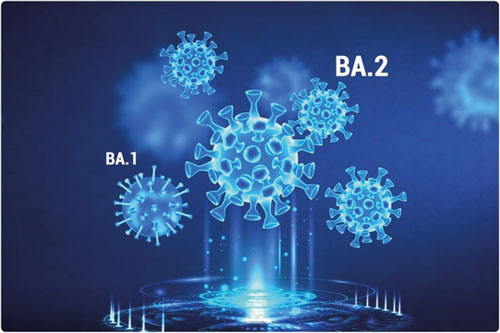The rapid outbreak of the severe acute respiratory syndrome coronavirus-2 (SARS-CoV-2) has resulted in the coronavirus disease 2019 (COVID-19) pandemic. Since its emergence in 2019, SARS-CoV-2 has evolved due to multiple genomic mutations.
The newly emerged SARS-CoV-2 variants have been classified as variants of concern (VOC) or variants of interest (VOI) in accordance with their virulence and transmissibility by the World Health Organization (WHO).
The SARS-CoV-2 Omicron variant (B.1.1.529) was first reported from South Africa and subsequently classified as a VOC by the WHO. An artificial intelligence (AI) model predicted the Omicron variant to be nearly 2.8 times more infectious than the Delta variant, which was the previously dominant circulating strain of SARS-CoV-2.
The model also predicted that the Omicron variant could most likely escape vaccine-induced immune protection, as well as severely compromise the efficacy of currently approved monoclonal antibodies (mAbs). More studies quickly supported these predictions and revealed that the Omicron variant is highly transmissible and is associated with a high vaccine breakthrough rate and enhanced antibody escape rate. As a result of these factors, the Omicron variant quickly replaced the Delta variant to become the dominant circulating strain in many countries around the world.
Scientists have revealed that the Omicron has three sub-lineages, of which include BA.1 (B.1.1.529.1), BA.2 (B.1.1.529.2), and BA.3 (B.1.1.529.3).
As compared to the original SARS-CoV-2 strain, Omicron BA.1 has a total of sixty mutations on the non-structural protein (NSP3) and structural proteins including the spike (S), envelope, membrane, and nucleocapsid proteins. Among the sixty mutations, thirty are located in the S region, which is the main antigenic target of antibodies generated through vaccination or natural infection.
Multiple mutations are also present in the receptor-binding domain (RBD) of the S protein, whose predominant function is to bind with the host angiotensin-converting enzyme 2 (ACE2) to allow entry of the virus into the host cell. BA.2 shares twenty-eight distinct mutations with BA.1, with four unique mutations at the RBD region. BA.3 shares most of its mutations with BA.1 and BA.2, except for one on NSP6 (A88V).
According to a recent Danish study, Omicron BA.2 is substantially more transmissible than BA.1 and capable of vaccine breakthrough.










